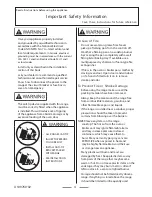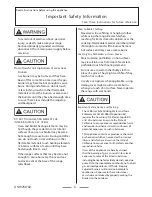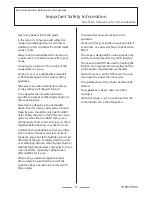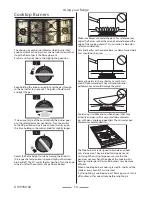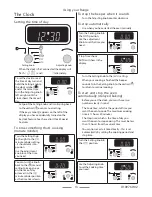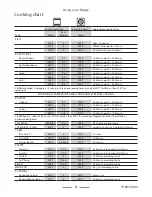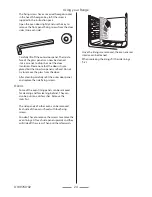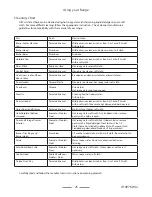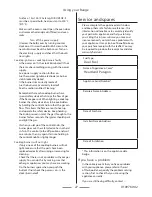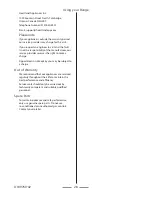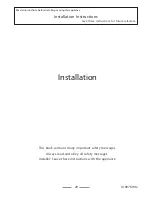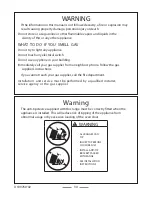
Using your Range
15
U109760-02
Cooking using the timer (Delayed
baking)
The timer can be used to turn just one oven
or both on and off automatically. The start and
stop time must be the same for both ovens but
different cooking temperatures can be set.
If you want to turn one of the ovens on
at the same time as the timer is set for
automatic cooking, you must wait until
the timer has turned on the oven/ ovens
first. Then you can adjust either of them
manually in the normal way.
You can set the oven for a combined delay and
cook cycle of up to 11 hours 59 minutes.
If you want to cook more than one dish,
choose dishes that require approximately
the same time. However, dishes can be
‘slowed down’ slightly by using small
containers and covering them with
aluminum foil, or ‘speeded up’ slightly by
cooking smaller quantities or placing in
larger containers. Never allow aluminum foil to
contact the heating elements.
Very perishable foods such as pork, dairy
products or seafood should be avoided if a
long delay period is planned, especially in hot
weather.
Don’t place warm food in the oven.
Don’t use an oven already warm.
Don’t use if an adjoining oven is warm.
Avoid using wine or beer if there is a delay
period, as fermentation may take place.
To avoid curdling, cream should be added to
dishes just before serving.
Fresh vegetables, which may discolor during a
delay period, should be coated in melted fat or
immersed in a water and lemon juice solution.
Fruit pies, custard tarts or similar wet mixtures
on top of uncooked pastry are only satisfactory if
there is a short delay period. Dishes containing
leftover cooked meat or poultry should not be
cooked automatically if there is a delay period.
Whole poultry must be thoroughly defrosted
before placing in the oven.
Check that meat and poultry are fully
cooked before serving.
Automatic cooking is not recommended for
baked items that require a pre-heated oven such
as cakes, cookies and breads.
Both ovens
Before using for the first time, heat the ovens
to 400°F for 30 minutes to expel manufacturing
odors.
The wire racks should always be pushed firmly
to the back of the oven.
Bakeware, meat pans etcetera should be placed
level centrally on the oven’s wire racks. Keep all
trays and containers away from the sides of the
oven, as overbrowning of the food may occur.
For even browning, the maximum recommended
size for a baking sheet is 14
1
/
4
” wide by 12”
deep.
Always place baking sheets with the widest part
across the oven.
Cooking high moisture
content foods can create
a ‘steam burst’, when the
oven door is opened. When
opening the oven stand well
back and allow any steam to
disperse.
When the oven is on, don’t
leave the door open for longer
than necessary, otherwise the knobs may get
very hot.
• Always leave a ‘fingers width’ between dishes
on the same rack. This allows the heat to
circulate freely around them.
• Cover meat when cooking to avoid fat
splashes.
•
To reduce fat splashing when you add
vegetables to hot fat around a roast, dry them
thoroughly or brush lightly with cooking oil.
•
Sufficient heat rises out of the oven while
cooking to warm plates in the broiler
compartment.
•
If you want to brown the base of a pastry
dish, preheat the baking sheet for 15 minutes
before placing the dish in the center of the
sheet or use the base heat in the Multifunction
oven.
• Where dishes may boil and spill over during
cooking, place them on a baking sheet.




